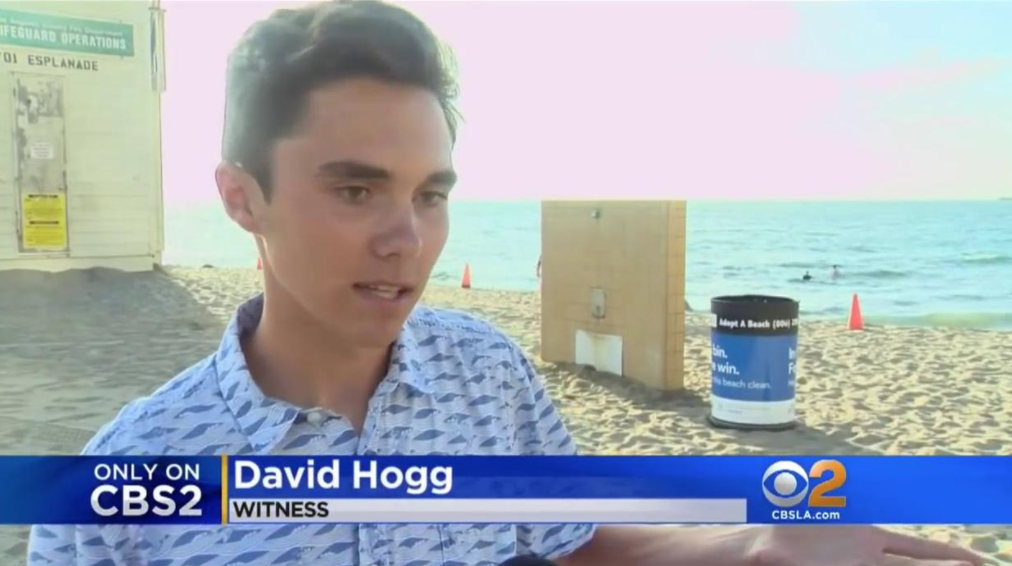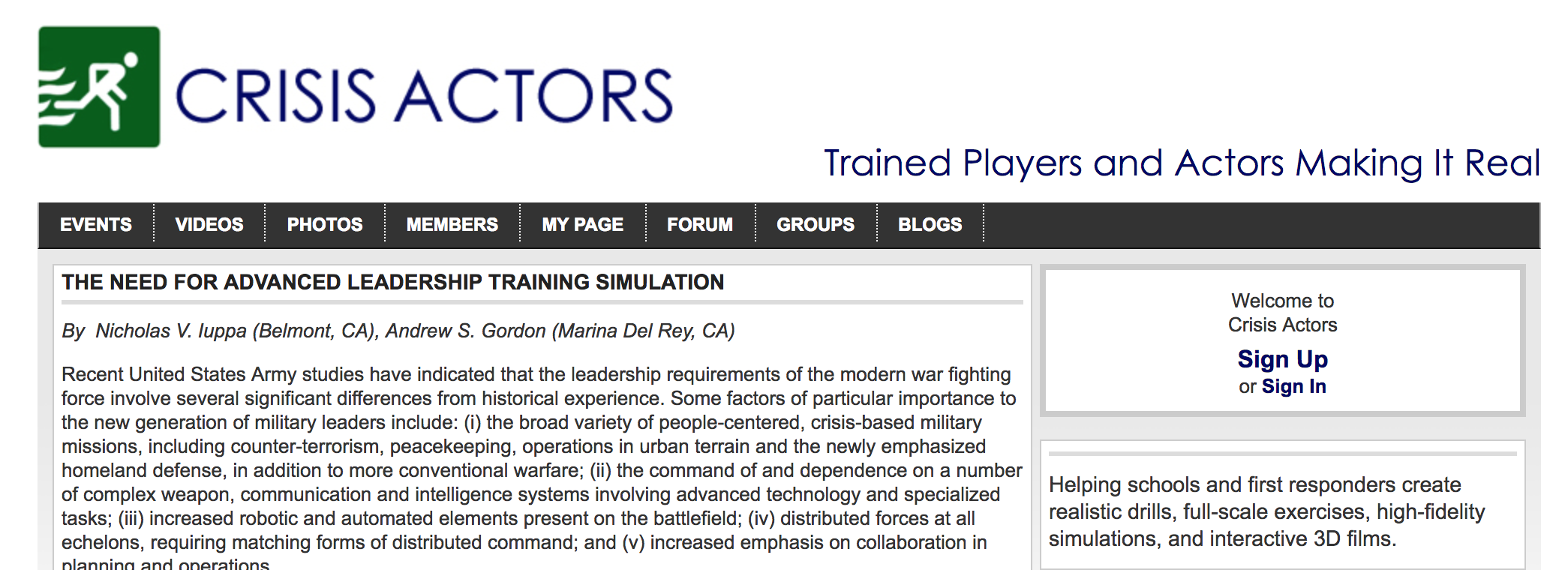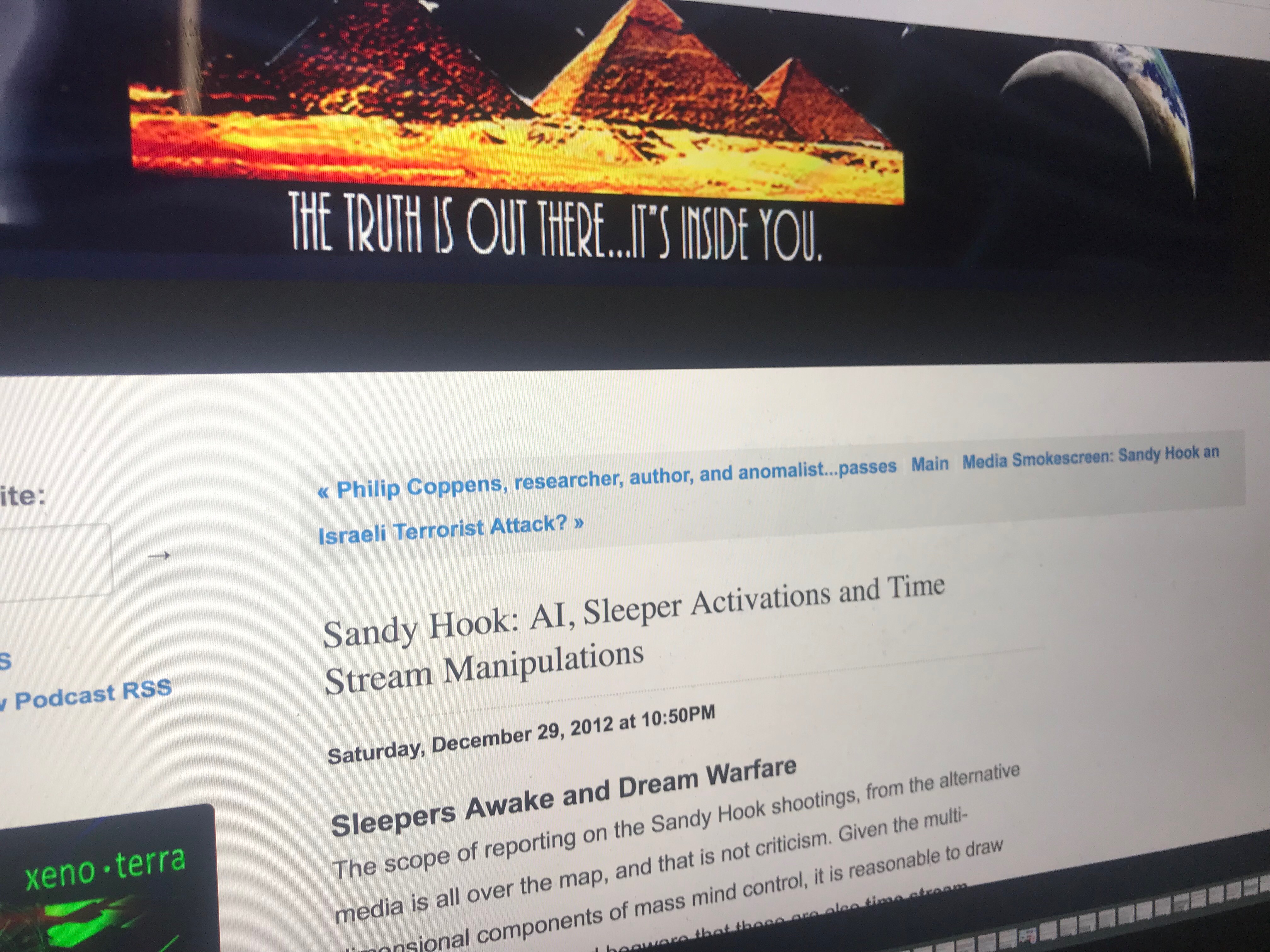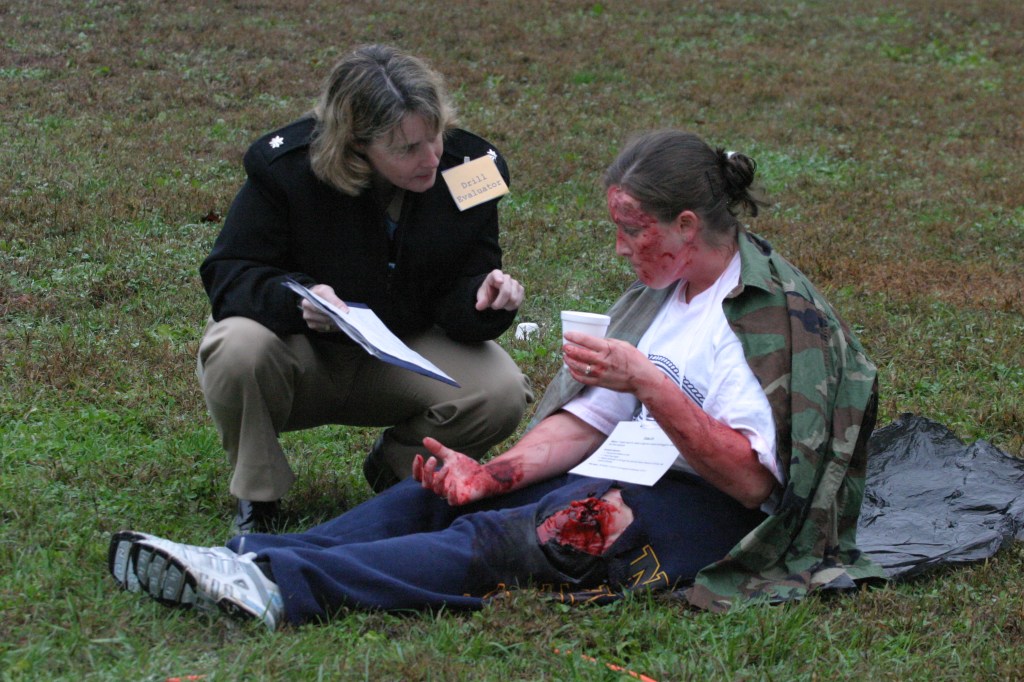The term ‘crisis actor’ has been in the news a lot lately, because conspiracy theorists have accused survivors of the Douglas High School mass shooting in Parkland, Florida, of being actors—people paid to pretend they witnessed a horrible tragedy that actually never happened and was instead staged by the government in order to garner the political will necessary to ban guns.
To be clear, there is no evidence this is actually the case. Conspiracy theorists have questioned the legitimacy of people who lived through a horrific shooting—watched their friends and classmates slaughtered—in an attempt to harass and silence their political activism. “Crisis acting” is now a term that’s constantly bandied about by the Alex Joneses of the world and has been used to explain away terrorist attacks such as the Boston Marathon bombing and the Bataclan Nightclub shooting, as well as most mass shooting events in the United States. It has become just as important as “false flag” in the conspiracy theory lexicon.
Videos by VICE
It wasn’t until relatively recently that conspiracy theorists were audacious enough to suggest that terrorist attacks and mass shootings actually didn’t happen at all.

Wednesday, a video claiming that shooting survivor David Hogg was an “actor” briefly became the top trending video on YouTube before the company deleted it. The conspiracy is now so mainstream that Jimmy Kimmel addressed the stupidity of it on his show this week.
Read more: Why Do Mass Shootings Attract Conspiracy Theories?
The resurgence of this conspiracy theory led me to attempt to track down the origins of the term “crisis actor.” I spoke to an emergency response trainer who has used “role players” to simulate crises for 40 years and went down the rabbit hole to find its origins as a completely unfounded conspiracy theory. It turns out that “crisis actor” is a relatively new phrase for a relatively new conspiracy.
The Conspiracy’s Origins
“A new group of actors is now available nationwide for active shooter drills and mall shooting full-scale exercises,” a press release from October 31, 2012 published by a Colorado-based professional acting studio called Visionbox reads. “Visionbox Crisis Actors are trained in criminal and victim behavior, and bring intense realism to simulated mass casualty incidents in public places.”
The release, which is the first instance of the term “crisis actor” that I could find, says that the actors’ experience in performing Shakespeare and other plays allows them to “improvise scenes of extreme stress while strictly following official exercise scenarios.” For a mall shooting simulation, “the actors can play the part of the shooters, mall employees, shoppers in the mall, shoppers who continue to arrive at the mall, media reporters and others rushing to the mall, and persons in motor vehicles around the mall.”

Though the term “crisis actor” wasn’t coined by conspiracy theorists, it was almost instantly co-opted by them. Less than two months after Visionbox’s press release was published, Adam Lanza walked into Sandy Hook Elementary School in Newtown, Connecticut, and killed 26 people, many of them children.
“Until the last three or four days, I hadn’t heard the term ‘crisis actors.’ We call them ‘role players.’”
James Tracy, who was a professor of communications at Florida Atlantic University at the time, published a series of articles “analyzing the Newtown narrative” on his Memory Hole Blog. His first post on December 20, six days after the shooting, claimed to examine “emerging contradictions” between the official story and interviews with people on the scene.
In his first post about Newtown, Tracy does not specifically suggest that Newtown victims were “actors,” but a commenter on that post does: “To broadcast gunshots and mayhem over the intercom system would be a very effective and easy way of pulling off a false flag operation where there actually was no shooter, it adds a bit of zing to what is essentially a drill and allows the actors and children to actually relate what they heard and did with a bit more reality.”
By January 1, Tracy was espousing this theory in a post with the URL “sandy-hook-the-illusion-of-tragedy.” In that post, Tracy asked: “Was Sandy Hook a Relocated Emergency Drill” that was staffed by “Itinerant ‘Crisis Actors?’”
Before Newtown, conspiracy theorists had often said that events like the 9/11 attacks were inside government jobs or false flag operations, but I can find little evidence of anyone suggesting that national tragedies were outright faked.
“After such a harrowing event why are select would-be family members and students lingering in the area and repeatedly offering themselves for interviews? A possible reason is that they are trained actors working under the direction of state and federal authorities and in coordination with cable and broadcast network talent to provide tailor-made crisis acting that realistically drives home the event’s tragic features,” he wrote.
Crucially, Tracy specifically cites VisionBox’s Crisis Actors press release and suggests that maybe a government agency hired the company for the job. The group—and its “Crisis Actors” have become patient zero for the larger crisis acting conspiracy. Its old website, www.crisisactors.org and the photos posted there are often used by conspiracy theorists in memes created to “prove” a theory. The site no longer exists, but VisionBox is still an active theater troupe.
“We have not worked in this area for many years so have no information at all,” a spokesperson for VisionBox responded to an email I sent asking the company to discuss the origins of the project and how it felt to have the project seen as part of a conspiracy.

While Tracy popularized the Sandy Hook crisis actors narrative, he did not invent it. On Christmas, someone calling themselves Travis J. Walker published a post called “The Newest Reality TV Hit Show: Sandy Hook” on a WordPress blog called The R.A.W.W. Scoop. The post notes that “the families seemed to be acting out of character for people who were supposed to be grieving a lost loved one. They seemed to be reciting a rehearsed script in these interviews.” The post goes on to outline the broad script that Tracy would later popularize, and also cites VisionBox’s Crisis Actors: “If an agency like this exists that almost guarantees realism, is it that far out of the realm of possibility to think that this could be staged?”
The plot was further suggested in a truly bizarre post December 29 called “Sandy Hook: AI, Sleeper Activations and Time Stream Manipulations” on a site called OffPlanetRadio (now OffPlanetMedia), which suggests both time manipulation at Aurora, Colorado massacre and Sandy Hook and a “triangulation of Sandy Hook in three separate, seemingly unrelated high profile events:” Aurora, Sandy Hook, and Hurricane Sandy. The post said that Sandy Hook was a drill alongside the suggestion that “the time stream aspect is more compelling given the interval of 7 days prior to the December 21, 2012 solstice. Ritual blood-letting is the cabal’s method of intoning power prior to key time events, especially when coordinated to lunar and solar-based events.” The post ends with the suggestion that conspiracies are mapped using artificial intelligence and “time stream manipulations … such events are holographic in their execution, compartmentalized in commission, and thematically woven into dream time neuropathy.”
A follow up post on December 31 called “Behind the Scenes (literally) at Sandy Hook: Crisis Actors,” drops the time and hologram stuff to focus on VisionBox.
What Tracy did, then, was signal boost a theory being espoused alongside those of mind control and time manipulation. Because Tracy was a university professor and not a random person on the internet, his theories were discussed by Alex Jones on InfoWars and gained traction in conspiracy circles. Fort Lauderdale’s Sun Sentinel was the first mainstream outlet to cover Tracy’s posts, forever enshrining “crisis actors” in our mainstream national lexicon; Tracy’s posts ultimately became a national controversy that was discussed by Anderson Cooper on CNN.
Before Newtown and Tracy’s blog posts, conspiracy theorists had often said that events like the 9/11 attacks were inside government jobs or false flag operations, but I can find little evidence of anyone suggesting that national tragedies were outright faked.
For example, a Gakwer.com post from July 23, 2013 called “Here Are the Most Insane Aurora Shooting Conspiracy Theories” surveys conspiracy theory message boards for theories about James Holmes’s massacre at an Aurora, Colorado screening of The Dark Knight. Popular theories at the time were that President Obama ordered the shooting or that the people of Aurora were systematically disenfranchised so that they didn’t own guns they could use to shoot back at Holmes. But no one said anything about “crisis actors.”
After Newtown and Tracy’s blog posts, conspiracy theorists retconned crisis actors into the Aurora shooting. Later, Tracy’s blog ran posts suggesting that shootings as early as a 1996 massacre in Australia were actually a government drill. Since then, anytime there is a shooting, terrorist event, or other mass casualty event, conspiracy theorists suggest that crisis actors are part of a government false flag operation, which more or less brings us to today, where YouTubers, InfoWars, and many on the far right doubting whether or not the Douglas High School shooting actually happened. A search on Google Trends aligns with this timeline; searches for “crisis actor” only register on the site after Tracy’s blog post, and regularly spike after any tragedy post-Newtown.
What Crisis Actors Actually Do
Like any conspiracy theory, this all started with at least a shred of truth that was stretched way too far. There are people who act out moments of crisis for training purposes, but they weren’t called “crisis actors” until VisionBox posted its press release and Tracy did his blog post. And real crisis actors—called “role players” in the emergency training industry—are an integral part of disaster response training.
“Until the last three or four days, I hadn’t heard the term ‘crisis actors,’” Michael Fagel, who has spent much of the last 40 years using actors to help simulate mass casualty events and other emergencies, told me. “We call them ‘role players.’ A well-trained role player is an integral part of a well-thought-out training system.”
“I was at those missions. We were doing our best to do rescue and recovery. These are not Hollywood setups.”
There is a well-established body of research on the use of role players during emergency training exercises. A 2004 paper published in the Journal of Contingencies and Crisis Management found that using “citizen volunteers” during emergency exercises “enhanced perceptions of response knowledge and teamwork” for police officers, firefighters, and even the volunteers themselves.
Fagel was deployed to the Oklahoma City bombing, the World Trade Center attacks, and Hurricane Katrina response efforts. He leads Aurora Safety, a company that designs training exercises for first responders, designs trainings for the Department of Homeland Security, and teaches homeland security at Louisiana State University. He says that the use of role players was one of the first things he was taught when he got into emergency response in the 1970s: “It wasn’t new then, either.”
According to Fagel, role players are often hired from drama troupes or are played by paramedics, med school students, or first responders.
“We’re not grabbing a person off the street and throwing them under a bus, literally,” he said. “We usually brief you the day before, and we use people who are trained.”
“If I’m doing a good job training you as a role player, you become more of a realistic tool for the people in the training”
Fagel’s role players hold 3.5-inch index cards that list their symptoms and they are given scripts to respond to paramedics and first responders in a realistic fashion. Often, they are put in “moulage,” or makeup: “torn clothes, bone fragments … a more realistic training exercise gives you better training,” he said.
“If someone is simulating a heart attack, we can’t actually make you have one. So when the paramedic comes to you, you’ll say ‘Wow, my left arm hurts, I have a tingling feeling,” Fagel said. “Maybe you don’t make eye contact, or if you squeeze their hands, you don’t have full grip, suggesting a neurodeficit. If I’m doing a good job training you as a role player, you become more of a realistic tool for the people in the training.”
As you might expect, Fagel says that conspiracy theorists are severely misguided and put his type of work at risk.
“I had a student tell me she thought FEMA had blown up the [New Orleans] levees and that the World Trade Center and Pentagon attacks were inside jobs,” he said. “I was at those missions. We were doing our best to do rescue and recovery. These are not Hollywood setups. I’m a realist, I guess.”
And so a legitimate safety training tool has been co-opted by conspiracy theorists with no evidence, and no proof. People who have suffered great tragedy are harassed and doubted because a couple conspiracy theory bloggers went off the deep end after Sandy Hook, and now here we are.




